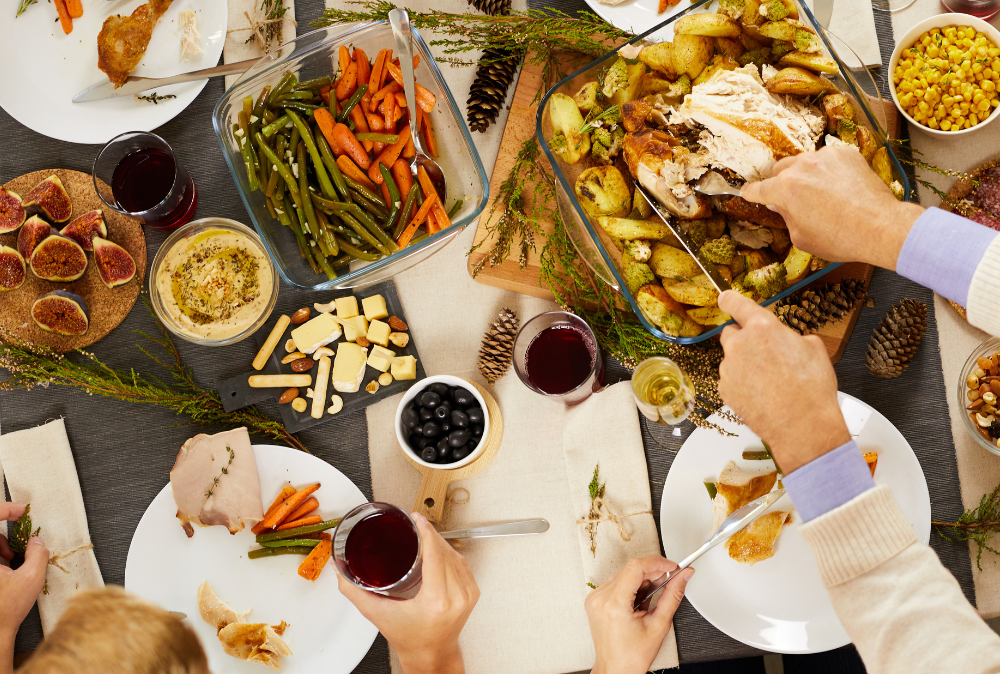
Thanksgiving is basically the national holiday of eating. It’s the one day when nobody judges your portion sizes and the phrase “second plate” is considered polite restraint. And if you’re a cannabis user — especially a medical patient — it’s also the time of year when the munchies practically get an honorary seat at the table.
The munchies are legendary in cannabis culture, but they’re more than a running joke. They’re a real effect with a real explanation, and honestly, once you understand why they happen, it makes the whole experience feel far less mysterious and way more… well, human. So with Thanksgiving around the corner, let’s talk about what’s actually going on in your body when cannabis sends you back to the fridge for the third time.
At its core, the munchies are your brain suddenly discovering that food is the most fascinating thing in the world. Even foods you weren’t interested in become irresistible. THC basically nudges your brain and says, “Hey, eating sounds incredible right now, doesn’t it?” While the experience can be humorous or exaggerated in pop culture, research shows that cannabis-induced appetite stimulation is very real.
The ECS helps maintain balance in the body, and one of the ways it does that is by regulating hunger signals. When cannabinoids from cannabis interact with this system, especially in certain brain regions linked to feeding behavior, it can shift your perception of hunger — sometimes dramatically.
The cannabinoid most responsible for the munchies is tetrahydrocannabinol (THC). THC binds to CB1 receptors in the brain, particularly in the hypothalamus, which helps regulate appetite. In short, THC gets your appetite circuits buzzing, which is why everything tastes better, smells better, and seems ten times more exciting than usual.
The body’s endocannabinoid system, the internal network that THC interacts with, acts as a metabolic regulator of sorts to naturally help manage things like hunger and digestion. When THC taps into that system, your brain receives stronger hunger signals and becomes more interested in food in general. THC can also enhance things like your sense of smell and taste, even so much as convincing your brain that you’re hungry when you’re actually full. In other words, no, you aren’t imagining that your food tastes better. Your brain is literally experiencing food more intensely when you’re high.
If you’re someone who gets the munchies hard while your friend feels nothing at all, that’s normal. Cannabis hits everyone differently. People with a higher tolerance, especially medical patients who use THC regularly, may not feel the effect as strongly because their brain has gotten used to THC. First-time or occasional users, on the other hand, might suddenly fall in love with snacks they didn’t even like before.
It’s not just tolerance either. The strains and products you choose matter. Edibles tend to bring a longer, deeper munchies wave because your body processes THC differently when you eat it. And terpenes — the compounds that we smell and taste — play a role, too. Strains heavy in Myrcene, for example, are often described by users as more likely to boost appetite. So yes, your personal chemistry, your tolerance, and your product all influence whether you’re raiding the pantry or perfectly uninterested in snacks.
Thanksgiving is built for comfort. It’s about warmth, relaxation, big meals, and spending time with people you love. Cannabis fits naturally into that mix for many patients. Whether it helps you manage pain so you can sit comfortably at the table, calms anxiety so you can socialize more easily, or simply makes eating feel joyful again, cannabis can amplify all the best parts of the holiday.
And if it brings on the munchies? Well, there’s no better day for it. Thanksgiving spreads were practically designed for second helpings.
If the munchies have you curious about how cannabis interacts with your body — or if you’re considering Medical Cannabis for appetite, nausea, pain, sleep, PTSD, or another qualifying condition — we’re here to make the process simple.
At UtahMarijuana.org, our medical providers take the stress and confusion out of the experience. We’ll answer your questions, help you understand your options, and figure out whether cannabis is right for you. If you’re ready, see if you qualify for Medical Cannabis use in Utah or schedule an appointment to get a card today.
Enjoy the season, enjoy the food, and enjoy feeling your best. Happy Thanksgiving from all of us at UtahMarijuana.org.
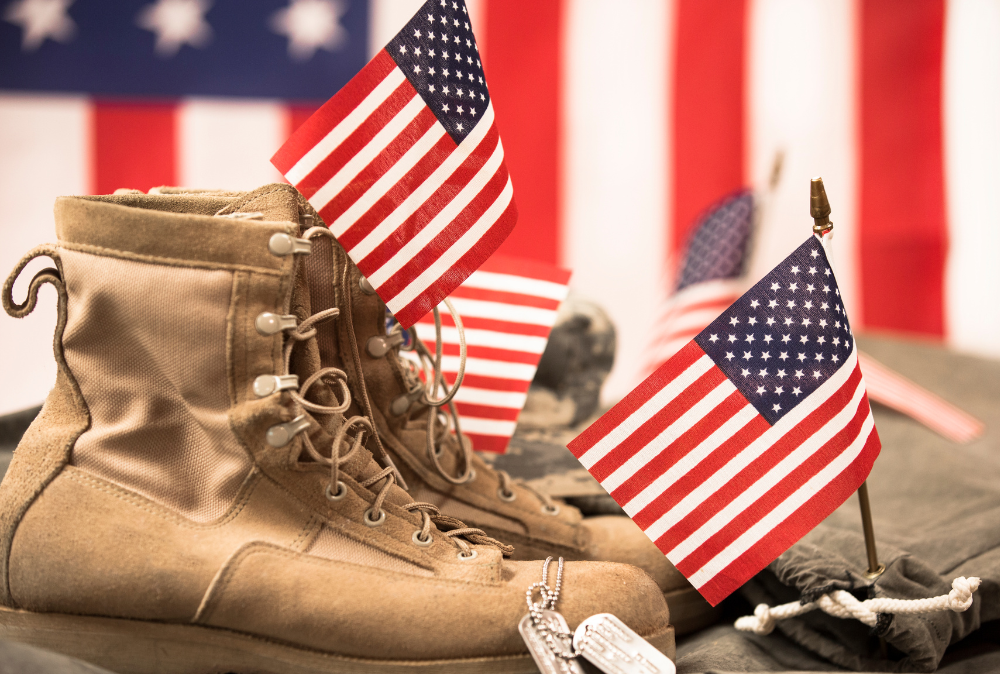
Each Veterans Day is a reminder of the courage, sacrifice, and resilience of those who have served in the armed forces. It’s also a time to reflect on the hidden wounds that many carry long after the uniform is folded away. Among the most common and challenging of those invisible injuries is post-traumatic stress disorder, or PTSD. In recent years, cannabis has entered the conversation as a possible tool for managing some of the condition’s toughest symptoms. The idea may sound simple, but the truth is nuanced, fascinating, and deeply human.
Post-traumatic stress disorder develops after someone experiences or witnesses trauma. For veterans, this trauma often comes from combat, injury, or life-threatening situations, but PTSD can affect anyone who has faced extreme fear or distress. The symptoms can appear in many forms — vivid flashbacks, nightmares, avoidance of reminders, irritability, and an overwhelming sense of alertness even in safe environments. These symptoms can make it difficult to rest, trust, or feel truly at ease. While therapies such as cognitive behavioral therapy and medications like SSRIs have helped many people manage PTSD, not everyone finds complete relief. This is where some have turned their attention toward alternative options, including cannabis.
Cannabis contains a range of compounds known as cannabinoids, the most famous being THC and CBD. These chemicals interact with receptors in the brain and body that form part of what’s called the endocannabinoid system — a network that helps regulate mood, sleep, appetite, and the body’s response to stress. Scientists are still learning exactly how this system works, but it appears to play a role in emotional regulation and the processing of fear and memory.
Early research has hinted that cannabis might help with certain aspects of PTSD, particularly sleep problems and anxiety. One clinical study found that patients who used medical cannabis reported notable improvements in PTSD symptom severity and sleep quality over time. Another observational study published in BJPsych Open reported that individuals using medicinal cannabis experienced significant reductions in both PTSD and depressive symptoms over a three-month period.
There’s also work underway specifically focused on veterans. The Multidisciplinary Association for Psychedelic Studies (MAPS) is conducting controlled trials evaluating cannabis for PTSD in veteran populations. Although results are still being analyzed, these efforts show growing recognition that veterans deserve new, evidence-based options for relief.
For all the promise, the science isn’t settled yet. A major systematic review found that evidence supporting cannabis as an effective PTSD treatment remains of low certainty. That means while some patients may benefit, others might see little change — or even experience side effects that outweigh the positives.
The U.S. Department of Veterans Affairs takes a cautious stance. The agency acknowledges that many veterans use cannabis to cope with PTSD but notes that research so far doesn’t support it as a primary treatment. The VA warns that long-term use can sometimes lead to dependence or worsen certain mental health conditions. This doesn’t mean cannabis has no place in treatment, but rather that it should be approached with care, ideally alongside guidance from a knowledgeable healthcare provider.
The experiences of people living with PTSD are deeply personal. Some describe cannabis as life-changing, allowing them to finally sleep through the night or reduce the constant replaying of traumatic memories. For others, the effects are inconsistent or even unpleasant. THC — the compound responsible for cannabis’s psychoactive effects — can sometimes trigger anxiety or paranoia in higher doses. CBD, on the other hand, is non-intoxicating and may have calming effects, but more controlled studies are needed to confirm its role in PTSD management.
One of the challenges is that cannabis is not a single, uniform product. Strains can differ widely in THC and CBD content, and the way it’s consumed —through smoking, vaporizing, or edibles — affects how quickly and intensely the effects are felt. Without standardized dosing, it’s difficult to predict how someone will respond. This makes self-experimentation risky, particularly for those with underlying anxiety or mood disorders.
On the other hand, the potential benefits are worth continuing to explore. For veterans who have not found adequate relief from traditional therapies, cannabis may represent a sense of agency and control over their symptoms. Being able to find rest, focus, or calm, even if just temporarily, can feel like reclaiming part of oneself. And that possibility, for many, is worth investigating.
Medical Cannabis is legal in Utah for patients with qualifying conditions, PTSD included. Patients must obtain a recommendation from a qualified medical provider, like those at KindlyMD, and register for a Medical Cannabis Card through the state program. Utah’s system is designed to balance accessibility with responsible oversight, ensuring patients receive accurate information about dosing, potential side effects, and product options available through licensed dispensaries.
For veterans in Utah, it’s worth noting that while the U.S. Department of Veterans Affairs cannot prescribe or provide cannabis, veterans are not penalized for using Medical Cannabis under state law. Providers outside the VA can help veterans navigate the process, assess symptoms, and develop a plan that prioritizes safety and symptom tracking. Learn more about Medical Card options here.
This Veterans Day, conversations around cannabis and PTSD shouldn’t be about hype or skepticism — they should be about empathy, science, and choice. Veterans who are exploring cannabis deserve both respect and reliable information. They also deserve access to ongoing research that can clarify what works, what doesn’t, and why.
It’s important to acknowledge that cannabis isn’t a cure-all. It might ease symptoms for some and fail to help others. But even if it doesn’t replace traditional therapy, it may complement it by supporting sleep, reducing anxiety, or improving mood stability. The key is an open, informed partnership between patient and provider. KindlyMD Care Providers are well-versed in canna-science and are ready to help you find a custom, thoughtful approach to your care. Schedule an appointment today.
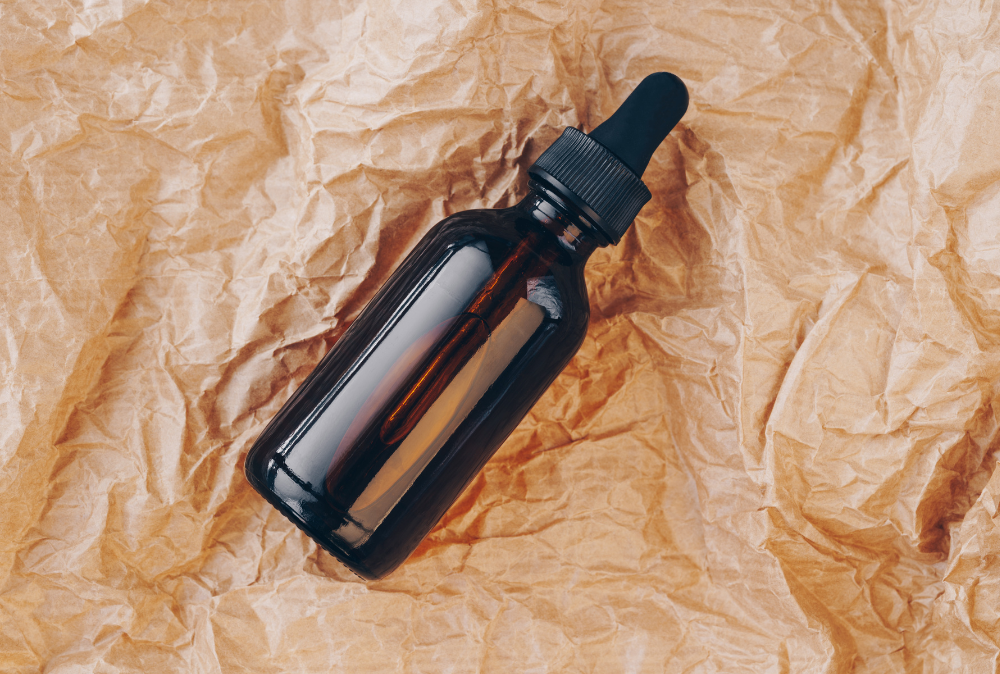
Thinking about trying a cannabis tincture? Great choice. Tinctures offer a subtle, convenient alternative to smoking or vaping, and they open a whole world of possibilities for how and when you can use cannabis. In this friendly guide, we’ll walk through what tinctures are, how to use them and the best times to consider them. As you explore, remember: effects vary by person, so proceed with curiosity, caution and an open mind.
A tincture is a cannabis extract mixed into a liquid, often alcohol or oil-based, which you place under the tongue (sublingually) or drop into your drink or food. Some find that this under-the-tongue method gives tinctures their distinct advantage: your body can absorb the cannabinoids more directly, and you’ll often feel the effects sooner than if the tincture were ingested in food and had to pass through your digestive system. This leads to more control over your experience and less guesswork about when the effects will hit.
Using a tincture is pretty low-key: you measure out the dose with the dropper provided, place the liquid under your tongue, hold it for around 30 to 60 seconds, and then swallow. Holding it under the tongue lets the cannabinoids absorb directly into the bloodstream rather than getting filtered by the digestive tract. If you’d rather not do sublingually you can add your tincture to a beverage or meal — but keep in mind this might change how fast you’ll feel it and how strong it may seem.
The nice part about tinctures is that you can fine-tune your dose. Maybe you’re trying just a little for afternoon relaxation or a gentle evening wind-down; a tincture allows you to start small and gradually adjust. Because it isn’t smoked or vaped, it tends to feel gentler and you avoid the effects of inhalation. Find your “just right” dose here.
There are many moments when a tincture can really shine. Suppose you’ve got a busy workday ahead and want something subtle to reduce stress and keep your focus intact. A carefully dosed tincture can do that. Or maybe you’re winding down in the evening and want to relax without committing to a full edible that might last way longer than you expected; a tincture gives you more ramp-up control.
Another scenario: you’re someone who doesn’t enjoy smoking or vaping, or for whom that isn’t an option. A tincture offers an accessible alternative — no lighter needed, no inhalation, just a dropper and your preferred environment. If you’re out and about and want something discreet, a tincture can be easily carried and used without drawing attention.
In terms of timing, using a tincture earlier in the afternoon might help you maintain calm and clarity; at night it can be part of your wind-down routine. The key is to tune in into how your body reacts and adjust accordingly. If you’re new, consider starting with a low dose, waiting a while to see how you feel, and gradually exploring different levels.
As with all cannabis products, tinctures deserve a thoughtful approach. First, check the potency and concentration so you know what you’re working with. Because sublingual absorption kicks in faster than edibles, you might feel effects within 20-40 minutes, but this will vary — and if you swallow the tincture instead of holding it under the tongue, it could behave more like an edible and take longer. Keep track of how your body responds.
Also, think about the environment and your intention. If you’re using a tincture to ease into sleep, for example, make sure you’re in a comfortable space and ready to relax. If you’re using it during the day, you’ll want something that supports your mood and activity rather than switching you off.
Be aware of legal and health considerations. Make sure the tincture is sourced from a reliable provider, has clear labeling and meets local regulations. If you’re taking other medications, it’s wise to check with a healthcare professional how cannabis might interact, or better yet, find a provider who can give you guidance on everything you’re taking, cannabis included. KindlyMD, our affiliated clinic, has plenty of such providers and accepts most major insurance plans.
If you’re curious about tinctures, the general rule of thumb is to start low and go slow. Choose a quality product and give your body the time to respond. You don’t need to overthink it — just listen to your body, set a comfortable scene, and enjoy the experience. Whether you’re looking to relax post-work, ease into sleep or explore a different cannabis routine entirely, a tincture can be a simple, reliable tool in your kit.
In short: when you want something flexible, low-key and controllable, a cannabis tincture is worth getting to know. And when used thoughtfully, it can fit beautifully into your life. For more information about tinctures or other canna-tips, check out our educational YouTube channel, Discover Marijuana. Then, see if you qualify for a Medical Cannabis Card in Utah and schedule an appointment to get a card.
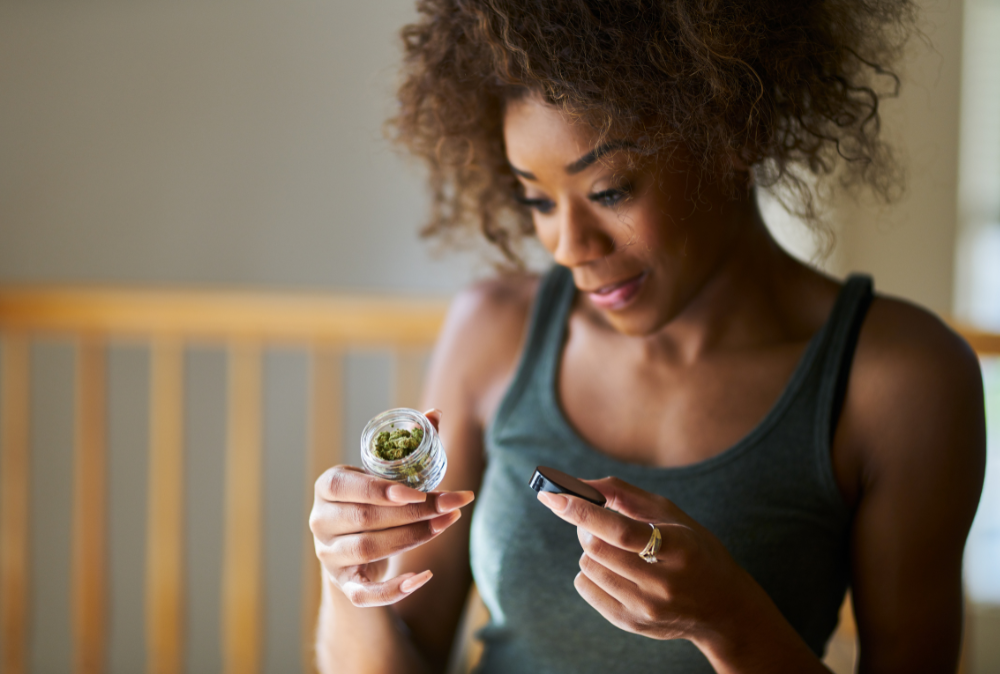
If you’ve ever wandered into a dispensary or scrolled through a cannabis menu online, you’re probably familiar with the classic debate: indica vs. sativa. For years, these two words have been the go-to way of sorting cannabis strains — indica for chilling out, sativa for getting a little buzzed and creative. But like a lot in cannabis culture, the truth is more complicated than that. Let’s break it down in a way that actually makes sense.
Here’s what most people hear about indica and sativa: indica is the couch-lock champ, perfect for winding down after a long day. Sativa is the Energizer bunny of cannabis, making you chatty, creative, or ready to tackle a project. Hybrids sit somewhere in the middle, leaning one way or the other depending on their genetics.
It’s easy to see why these labels stuck — they simplify a huge, confusing world of strains. But here’s the kicker: they aren’t always reliable. In fact, in many instances where people try to guess what they are consuming, most get it wrong. People often think they know the effects of indica vs. sativa, but their experiences don’t line up with the labels. So, while the distinction is a helpful starting point, it’s not a guarantee.
Originally, the difference wasn’t about how you’d feel after smoking — it was about how the plants grow. Indica plants are shorter, bushier, and have wide, dark green leaves. They produce dense, chunky buds and flower faster, which made them ideal for cooler climates.
Sativa plants are taller and slimmer, with long, narrow leaves and airy buds. They take longer to flower and thrived in warmer, tropical regions. Over time, people started linking these physical traits to effects, and voilà! indica = relaxing, sativa = energizing. But in today’s cannabis world, those clear-cut distinctions are rare. Most strains are hybrids, mixing genetics from both sides.
Here’s where it gets really interesting. What actually shapes how a strain makes you feel is chemistry, not just a name. Cannabis contains cannabinoids like THC and CBD, terpenes like myrcene or limonene, and dozens of minor compounds. All of these interact in what’s called the entourage effect, meaning the overall experience comes from the whole cocktail of compounds, not just whether it’s “indica” or “sativa.”
That’s why two indicas can feel completely different. One might be loaded with myrcene, which often brings on that sleepy, relaxed vibe. Another might have more limonene, giving a bright, uplifting feel. THC levels, CBD balance, and even minor cannabinoids play a role too. And don’t forget about you — your tolerance, mood, and environment all factor in. What knocks one person out might leave another buzzing with energy, so always exercise caution.
These days, most cannabis strains are hybrids, meaning they’re a mix of indica and sativa genetics. Breeders have been experimenting for decades to create strains with unique flavors, aromas, and effects. You’ll see strains labeled “indica-dominant” or “sativa-dominant,” which is a clue about which side of the spectrum they lean toward, but even that isn’t a promise.
Take Blue Dream for example. It’s technically a sativa-dominant hybrid, but many users find it balanced, offering both cerebral stimulation and gentle body relaxation. Or OG Kush: usually indica-dominant, yet it can give both a calming body buzz and a euphoric mental lift. Hybrids make the old indica vs. sativa distinction less useful, but they also give you more options to find exactly what works for you.
Cannabis science is catching up, and the indica vs. sativa labels are starting to feel a bit outdated. The new approach focuses on chemical profiles. This is all about the mix of cannabinoids and terpenes in a strain, rather than just its ancestry or appearance.
Instead of asking whether a strain is indica or sativa, you’d look at things like THC, CBD, and which terpenes dominate. Limonene-heavy strains might make you feel happy and creative, while myrcene-heavy strains can help you relax.
So how do you choose? Think of indica vs. sativa as a rough guide, but don’t let it be the only factor. If you want to relax and unwind, an indica or indica-leaning hybrid might be a good start. If you’re looking for something social or creative, a sativa-leaning strain might suit you.
Whenever possible, check lab results. Cannabinoid levels and terpene profiles give a much clearer picture of what you might expect than the label alone. Pay attention to how strains have affected you in the past — maybe you love limonene-rich strains, or maybe myrcene-heavy ones help you melt stress away. Tracking your experiences is key; keep a journal or take a simple note of the strain, dosage, and how it made you feel. Over time, you’ll build a personal guide that’s way more reliable than labels alone.
Here’s the bottom line: indica vs. sativa isn’t about better or worse. It’s a starting point, a cultural shorthand that can point you in a general direction, but it doesn’t guarantee effects. Modern cannabis is mostly hybrid, and how you feel depends more on the chemical makeup of the strain and your own body than on whether it’s labeled indica or sativa.
Think of it like tea. Saying indica vs. sativa is like saying black tea vs. green tea. It gives you an idea of what you might expect, but there are hundreds of blends and subtleties within each category. The real trick is exploring, experimenting, and noticing what works for you. Ready to start experimenting to find your favorite? See if you qualify for a Medical Marijuana Card in Utah today.
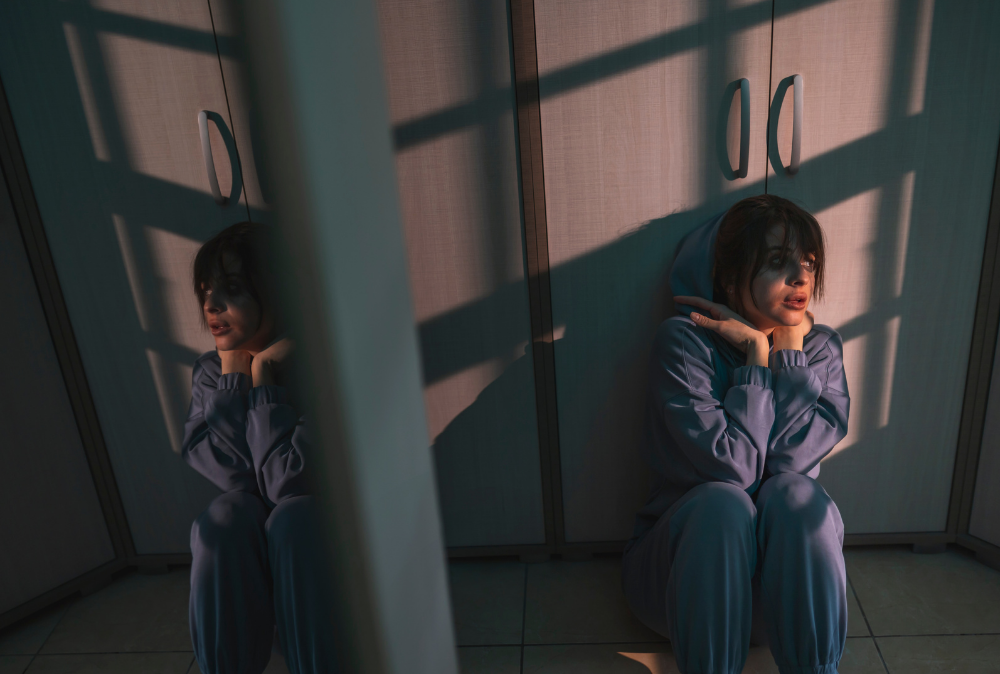
Let’s get real. Sometimes cannabis flips the script on relaxation and sends your brain into overdrive. Suddenly, you’re not just high — you’re paranoid. Like, “is my cat judging me?” paranoid.
But why does this happen? What’s the connection between marijuana and paranoia? And more importantly, how do you avoid it? Let’s break it down.
THC, the main psychoactive compound in cannabis, overstimulates the amygdala— the part of your brain that controls fear and threat detection. When that area is on overdrive, your brain starts firing off paranoia alarms.
That’s why you might suddenly feel like everyone’s looking at you (even if it’s just your reflection).
Here are some ways to enjoy cannabis without inviting unwanted paranoia to the party:
Here’s the truth: the easiest way to cut down paranoia is to stop worrying about legality.
With a Utah Medical Cannabis Card, you’ll get:
Ready to skip the paranoia and enjoy cannabis with confidence? See if you qualify for a Utah Medical Cannabis Card today and make your cannabis journey smoother, safer, and legal.

If you’ve ever had a little too much cannabis and suddenly found yourself dizzy, anxious, or glued to the couch with the spins — you’ve experienced what’s known as greening out. Don’t worry, it happens to the best of us. The good news? It’s temporary, manageable, and totally preventable next time around.
Here’s your go-to guide for surviving (and bouncing back from) a green-out.
“Greening out” is just cannabis slang for getting way too high — so high that your body and brain feel like they’re in panic mode. It’s not dangerous, but it can feel pretty uncomfortable. Symptoms include:
Sound familiar? If so, here’s how to ride it out like a pro.
If you’re the sober buddy — or at least the less high one — here’s how to help:
Nobody plans to green out, but prevention is pretty easy:
Greening out feels rough, but it’s important to remember that it’s not the end of the world and it’s not life-threatening. With a little water, some deep breaths, and maybe a nap, you’ll be back to baseline soon enough. The key is learning your limits and treating cannabis with respect so that your next session is fun, not stressful. Want to learn more about safe cannabis use in Utah or get a Medical Cannabis Card of your own? Book an appointment today!
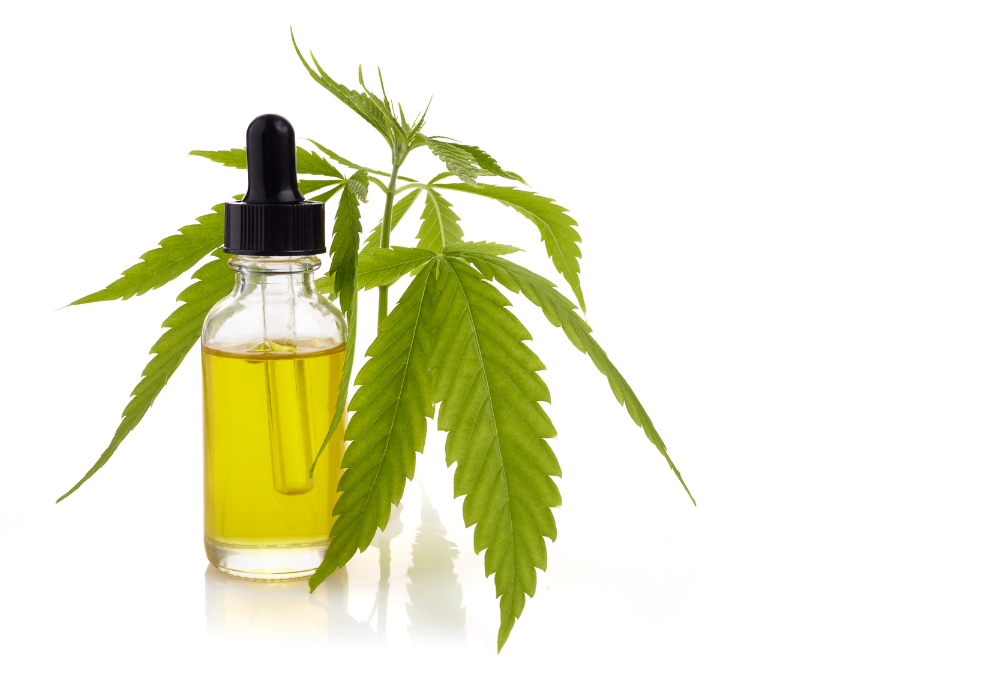
If you’ve spent more than five minutes exploring the world of cannabis or wellness, you’ve probably heard people talk about cannabidiol, a.k.a. CBD. Maybe you’ve even tried it yourself — but what is it exactly? And does it actually do anything?
Let’s break it down in plain English: what it is, what it’s good for, and how to figure out if it’s right for you.
Cannabidiol is long for CBD (yeah, it’s a mouthful), and it’s a compound found in hemp — part of the cannabis family. It’s totally non-intoxicating, which means it won’t get you high like THC does. That’s a big reason why so many people feel comfortable using it for health and wellness.
CBD works with your endocannabinoid system (ECS) — basically your body’s natural balancing system that helps regulate things like sleep, mood, stress, inflammation, and pain. When your ECS is off, you might feel off. CBD can help get things back in sync.
While CBD isn’t magic, it’s backed by science and a ton of personal stories from people who’ve found real relief. Here are some areas where it really shines:
For most people? Yep. It’s generally well-tolerated and doesn’t come with a long list of scary side effects. That said, it can interact with certain medications — especially things like blood thinners — so it’s smart to talk to a medical provider before diving in.
Luckily, UtahMarijuana.org connects you with real medical professionals who can guide you through options like CBD, THC, or full Medical Cannabis treatment plans.
Not all CBD is created equal. If you’re buying it at a gas station… maybe rethink that. Here’s what to look for:
Good CBD should be free of pesticides, heavy metals, and sketchy additives.
CBD isn’t a miracle cure, but it can be a really helpful tool — especially when it’s part of a bigger wellness or Medical Cannabis plan. Whether you’re managing pain, anxiety, sleep problems, or just want to feel more balanced, it’s worth exploring.
At UtahMarijuana.org and our affiliated clinic, KindlyMD, we’re here to help you understand your options and support your health goals with licensed professionals who actually listen. If you’re thinking about CBD — or even getting your Utah Medical Card — we’ve got your back.
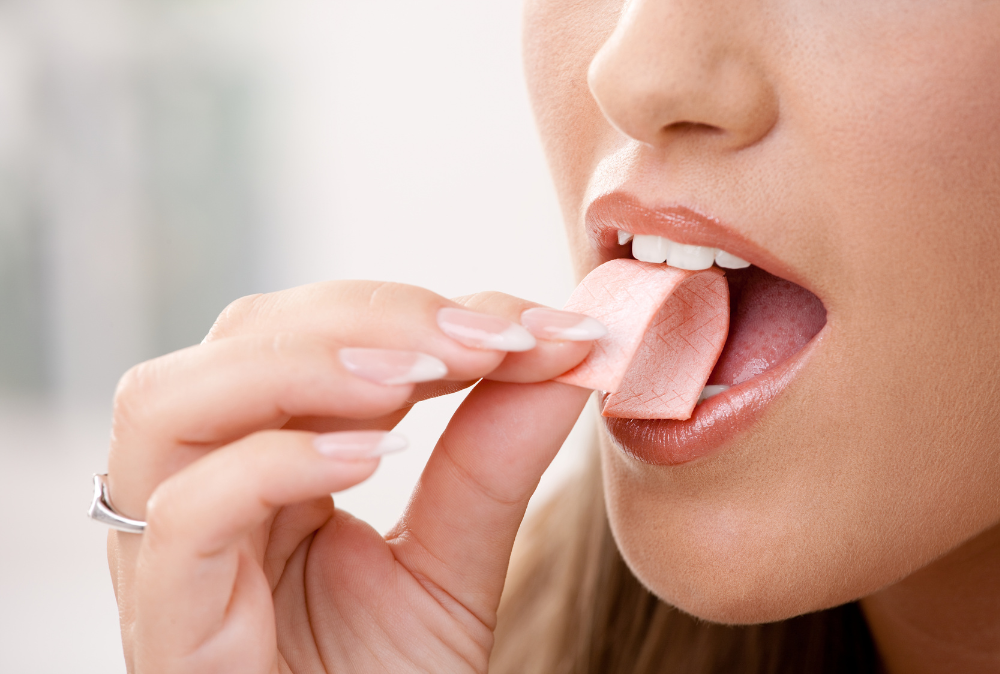
If you’re a Medical Cannabis patient or recreational user, chances are you’ve experienced that unmistakable dryness in your mouth known as cottonmouth. But what exactly causes it? Is it a sign of dehydration? Can it be prevented? Let’s spend some time together to explore the science behind cottonmouth, dispel common myths, and hopefully, find some practical advice.
Cottonmouth, medically referred to as xerostomia, is the sensation of a dry, sticky mouth that is often experienced after using cannabis. It can range from mild discomfort to significantly dry conditions that make speaking or swallowing difficult.
This side effect is not exclusive to smoking — edibles, tinctures, and vapes can all lead to cottonmouth.
The primary reason cannabis causes cottonmouth lies in how it interacts with the endocannabinoid system (ECS) — a network of receptors that help regulate various bodily functions, including saliva production.
Cannabis contains compounds known as cannabinoids, with THC (tetrahydrocannabinol) being the most well-known. THC binds to CB1 and CB2 receptors found throughout the body — including in the submandibular glands, which are responsible for producing around 70% of your saliva.
When THC binds to these receptors, it inhibits the signals that tell the glands to make saliva, effectively drying out the mouth. A 2006 study confirmed that cannabinoid receptors in salivary glands play a major role in the dry mouth process.
Contrary to popular belief, cottonmouth is not a direct result of dehydration. While staying hydrated is always important for overall health, cottonmouth stems from suppressed salivary gland activity, not a lack of water in the body.
Drinking water may temporarily relieve the dryness, but it doesn’t address the root cause — suppression of saliva production due to cannabinoid activity. That said, chronic cannabis use combined with low water intake can exacerbate dry mouth symptoms.
Certain factors can increase your likelihood of experiencing cottonmouth:
While there’s no guaranteed way to prevent cottonmouth, there are several strategies that can help manage it:
While cottonmouth itself is usually harmless, chronic dry mouth can increase your risk of dental issues, including cavities, gum disease, and bad breath. If you regularly consume cannabis and notice ongoing dryness, speak with a dentist or healthcare provider.
Cottonmouth is a common and well-understood side effect of cannabis use, caused by THC’s suppression of saliva production — not dehydration. While it may be inconvenient, it’s typically easy to manage with hydration, salivary stimulants, and good oral hygiene.
While we’re at it, if you or someone you know may benefit from Medical Cannabis use, see if you qualify or schedule to get a card today.
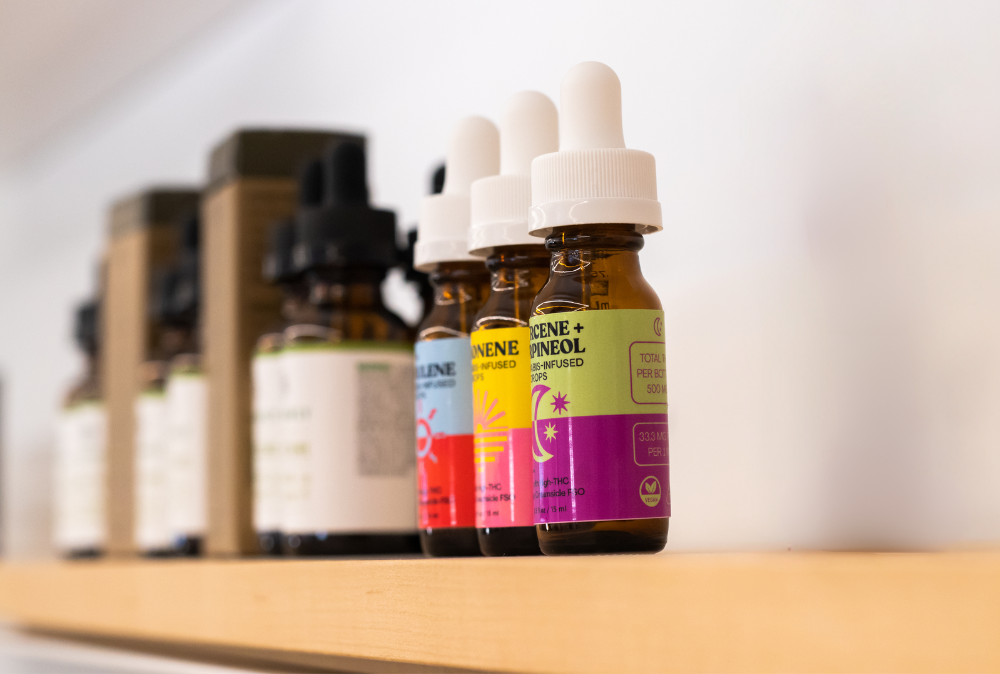
So, your favorite strain is gone. Discontinued. Vanished into the cannabis void. Maybe it had the perfect balance of chill and focus or helped you sleep like a rock. Whatever it did — it worked — and now you’re stuck staring at a shelf full of names that mean nothing to you. It’s happened to the best of us.
Don’t stress. Instead of hunting down a strain by name, try choosing your next go-to based on its cannabinoid profile. That’s the real key to replicating how your old favorite strain made you feel.
Here’s how to do it.
Strain names are fun, but they’re not as permanent or consistent as you might think. A few (but not all of the) reasons why they disappear are:
So instead of chasing names, start chasing the science.
The effects you feel from a cannabis product aren’t just about the name on the label; They’re about the cannabinoids inside it.
Cannabinoids are the active compounds in cannabis that interact with your body’s endocannabinoid system to influence things like mood, energy, appetite, inflammation, and sleep.
Here are some of the most important ones to know:
The OG psychoactive compound. It’s responsible for the euphoric, “high” feeling. As a general rule of thumb:
Non-intoxicating, calming, and known for reducing anxiety and inflammation. Often paired with THC to mellow out the high. Great for people who want to feel better, not blitzed.
The “mother cannabinoid.” Early research suggests it may help with focus, inflammation, and even gut health.
Mildly psychoactive and deeply sedating. Often found in aged cannabis or sleep-specific products. Ideal if your old favorite helped you sleep.
Energizing, appetite-suppressing, and stimulating in low doses. It’s rare, but if your go-to strain helped you focus and skip the munchies, this might be why.
If your favorite strain is discontinued, here’s how to shop smart:
If your old strain just hit differently, it could be the result of the entourage effect: the synergy between cannabinoids and terpenes. So, while cannabinoids drive most of the effect, don’t ignore the terpenes (like limonene, myrcene, or pinene) that give each product its personality.
When in doubt, ask your local cannabis pharmacist if they can recommend something with a similar cannabinoid and terpene profile to your discontinued strain.
Instead of mourning a specific strain, get curious about what was inside that flower, cartridge, or edible that worked so well for you. Learning how to choose cannabis by cannabinoid profile puts the power back in your hands so you’re never left stranded when a product vanishes. Because let’s be honest: this isn’t the first time and it probably won’t be the last.
If you’re in Utah and ready to explore Medical Cannabis options that match your goals — whether that’s relief from pain, nausea, or something else — we’re here to help. Book an appointment today to get your Medical Cannabis Card and get connected with a canna-expert and pharmacist who can help decode your perfect profile.